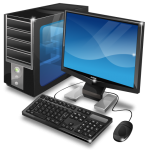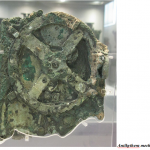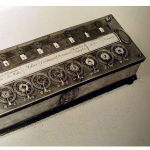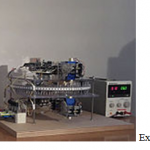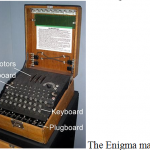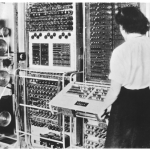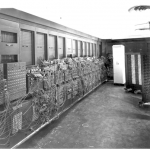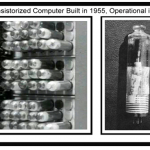(By Konstandinos Hantzis, A Class)
Nowadays, the most people in the civilised parts of the world own a computer, or something based on the invention of the computer (such as laptops, tablets, smartphones, etc.). The very existence of the computer continuously helps us in actions ranging from logging in social media to finding information about virtually anything on the Internet. However, very few people know the history of this extremely groundbreaking invention.
The earliest – as believed- computer was the Antikythera mechanism. It was a device used for astronomical purposes. It was used for predicting the movements of the sun and also for finding where the brightest stars and constellations rose and set during a year. It looked just like a modern day laptop.
Antikythera mechanism
Scientists and inventors started becoming interested in making computational and calculating devices in the 17th century, after the invention of logarithms by the Scottish mathematician John Napier. Even Pascal built a mechanical adding device back in 1640 based on a Greek design. The “Pascaline”, as this device was called, could add and subtract. The original “Pascaline” had 5 gears, but there were some variations which featured 6 or 8 gears and thus could do more difficult equations. The “Pascaline” was given its last form by Leibniz who modified it so it could multiply and divide.
The “Pascaline”
However, the first design that inspired the modern day computers was none other than the Analytical Engine made by Charles Babbage in 1837. This design looked very much alike a contemporary computer, concerning the hardware. Even though this design was constructed, there was not enough advancement concerning electronics that day for its implementation.
The 1st generation of computers (1943-1956), began with the construction of the Turing Machine made by Alan Turing during World War II. The Turing Machine could solve any mathematical problem which was in algorithm form.
Experimental prototype of Turing machine
Afterwards, the first programmed computer was made and it was called the Colossus Mark I. The Colossus Mark I was constructed for the sake of decoding the German machine called Enigma during WWII.
Colossus Mark I
After the Colossus Mark I, the US needed some device which could make their weapons more accurate. This is when the first reprogrammable computer was built, called ENIAC. ENIAC was a huge piece of machinery. It filled a whole floor of space (!) During the 2nd generation of computers (1956-1963), transistors appeared for the first time, which made faster and smaller computers possible.
In 1956 the first computer using only transistors was made, called TX-0. The 3rd generation is considered by many people as the most important generation of all since it was then that the circuit was made for the first time and it changed the history of computers forever.
TX-0
From 1971 until today computers belong to the 4th generation. The difference with the previous generation is that from then on, computers are equipped with a CPU unit, they have a screen and we can interact with them not only by switches but also with a mouse and a keyboard. Also during this generation there were some very interesting inventions such as the touch screen and the tablet.
To conclude, most people believe that the history of the computer began in the mid ’90s. That is completely wrong. Computers are older than you probably thought and their history is not over yet…
Source: Wikipedia.org

